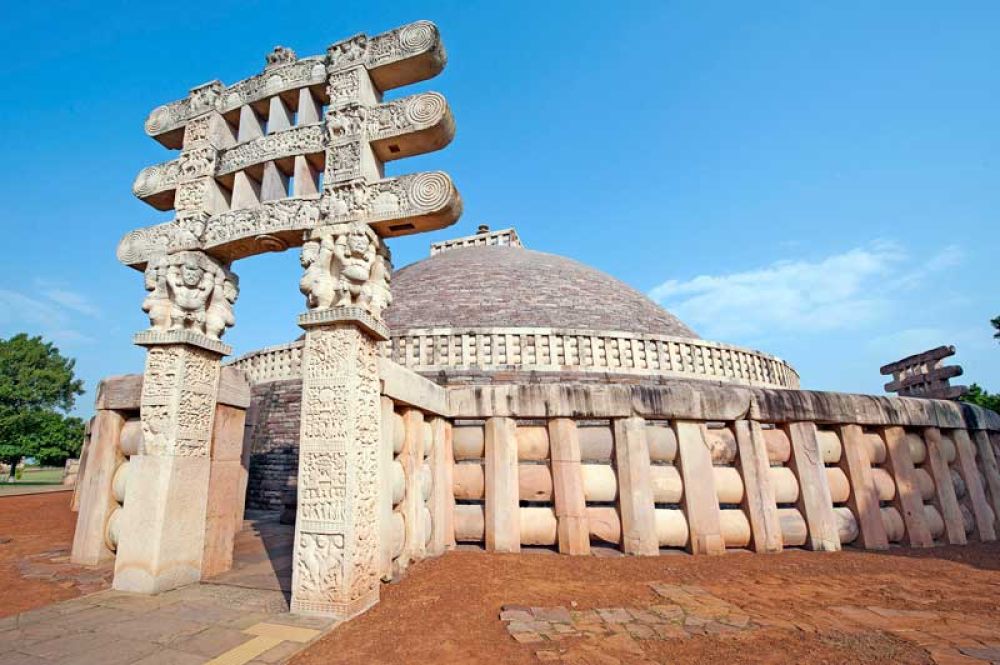

Located in the heart of India, the ancient town of Sanchi is famed for its Buddhist stupas, monasteries, temples, and pillars dating back to the 3rd century B.C. The town is situated in the state of Madhya Pradesh and is most renowned for the Great Stupa, which is listed as a UNESCO World Heritage Site. Among the various gateways or 'Toranas' of the Great Stupa, the Eastern Gateway has its own tale to tell, rich with history and magnificent artistry.
The significance of Sanchi as a major pilgrimage destination arose from the time of Emperor Ashoka, a key proponent of Buddhism, who commissioned the building of the Great Stupa. However, after the decline of Buddhism in India, Sanchi fell into obscurity and was rediscovered in 1818 by a British officer, General Taylor. It wasn't until 1919 that Sir John Marshall, Director-General of the Archaeological Survey of India, began the restoration of this site, paving the way for Sanchi's emergence as a tourist destination. Since then, the site has attracted historians, archaeologists, and tourists alike.
The Eastern Gateway of the Great Stupa is particularly significant as it is thought to be the main entrance. Adorned with intricate carvings and sculptures, the gateway tells stories of the Buddha's life and his previous incarnations, also known as 'Jatakas'. The carvings depict symbology and metaphor, designed to instruct and inspire pilgrims and visitors with its profound teachings on detachment, morality, and enlightenment.
The top architrave of the Eastern Gateway portrays the Great Departure of Prince Siddhartha, the future Buddha, from his father's palace. Yet, not a single image of the Buddha was depicted in human form; instead, his presence was symbolized through representations such as thrones, footprints, or the Bodhi tree.
Until the 20th century, international visitors primarily dominated the tourist demographic, as Sanchi was on the itinerary of those with a penchant for ancient history and archaeology. However, in recent years, domestic tourism has surged, with more Indians exploring their rich heritage.
The latest trends in tourism at Sanchi reflect a growing interest in sustainable and responsible tourism. Visitors are increasingly aware of the importance of preserving such historic sites. In addition, digital advancements have seen the implementation of virtual tours and Augmented Reality experiences that allow remote or tech-savvy tourists to engage with Sanchi’s storied past.
Moreover, local authorities have been focusing on improving tourist facilities and accessibility to ensure that Sanchi's awe-inspiring legacy can be experienced comfortably and respectfully, in a manner that befits its historical and spiritual significance.
Travelers coming to Sanchi can not only marvel at the beauty of the Eastern Gateway but can also engage with the local culture through nearby museums, traditional cuisine, and craft stores that offer a peek into the regional artisanship. Every year, the town witnesses a flock of visitors during the 'Sanchi Mahotsav', a festival that celebrates its ancient splendor with cultural performances, exhibitions, and guided tours.
As tourism continues to evolve post-pandemic, the Eastern Gateway, along with the entirety of Sanchi, embraces its role as a beacon of peace, history, and an emblem of India’s invaluable contribution to the cultural ethos of the world.